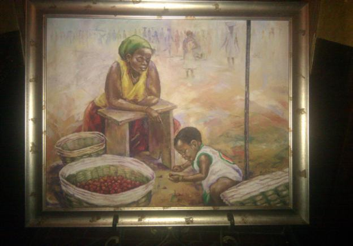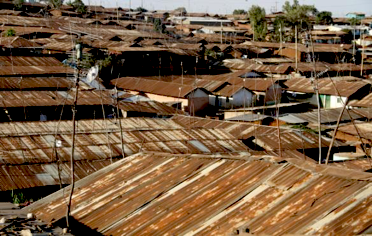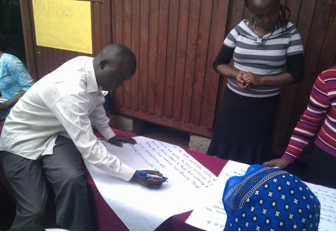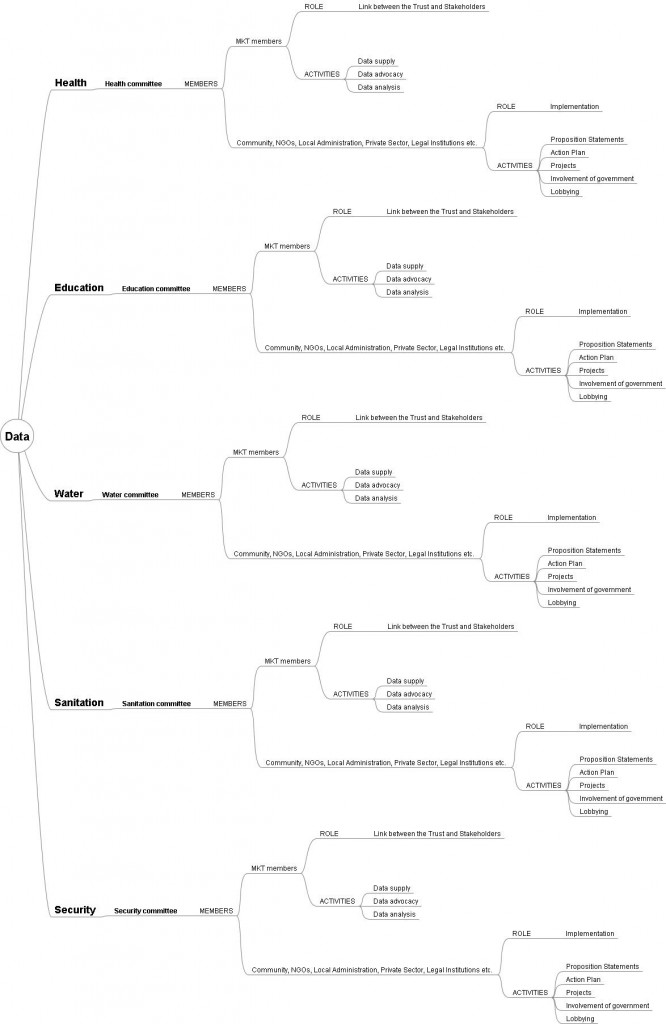Kepha Ngito is Executive Director of Map Kibera Trust. This post is his first in a series of personal reflections on his experiences with Map Kibera.
The Accra effect
Recently I attended the ON (Omidyar Network) -Baraza together with the African Leadership Network conference in Accra, Ghana. Both events happened one after the other at the same venue, the Movenpick Hotel. Irony is that I found peace of mind to write down these thoughts while in a 5-star hotel in Accra, Ghana, and not in a tin, stick and mud shack in the heart of Kibera, Mathare or Mukuru slums in Nairobi. These last 3 locations are normally my dwelling places, not just physical dwellings but psychological dwellings and lately, professional dwellings. I was only a visitor in Ghana, a country with a lot of history.
 Being in Ghana or say, the comforts of the hotel ironically provided a certain ‘peace’ of mind and quiet – a rare luxury for most people living in slums — that enabled me to reflect enough to write this article. Even though I don’t compare myself to those in prison or exile, I understood why they write better and longer articles.
Being in Ghana or say, the comforts of the hotel ironically provided a certain ‘peace’ of mind and quiet – a rare luxury for most people living in slums — that enabled me to reflect enough to write this article. Even though I don’t compare myself to those in prison or exile, I understood why they write better and longer articles.
For nearly 10 months now, I have been working as the Executive Director at Map Kibera Trust. I am also one of the founding Trustees of the organization. A quick attention grabber would be that we worked with the community to make the first digital map of Kibera and ‘placed’ it on the Kenyan map after decades of its depiction as a forest on the country’s official map. We have since done the same for Mathare and Mukuru.
With a team of about 45 people (15 in each location), we are a group of people who believe that mapping is the first step to affirming that a people exist somewhere, even when they have been pushed to the periphery of mainstream development and tagged as ‘informal’ or depicted as a forest, a quarry site, a swamp, an electricity reserve or a garbage dump site in official maps. For many years, over 60% of Nairobi residents who reside in the many slums in and around the city have occupied the ‘non –formal’ residential areas and built what is now known as ‘informal settlements.’ Putting them on the map physically, then socially, then economically and even politically by encouraging an information-driven culture of advocacy is what we have been working at in the last 2 and half years of our existence. In this way, we attempt to ‘formalize the informal’. It’s a pity that some people’s identities are carved for them by others and by circumstances beyond their control. Where we live or lived does not necessarily make us who we are. We believe that we are not products of our environment, we are the creators of it, we sustain its beauty or unbeauty and that’s why we must be the people to change what’s wrong about it.
‘Development’ chaos in the slums
Even as I waited eagerly to interact with other invited leaders from different parts of Africa and the world at the Accra conference, I couldn’t help but reflect at the journey we have made in Kibera, Mathare and now in Mukuru. This was a journey aimed at increasing the spaces of transparency, establishing credible information and data and making it open and accessible to people. Offering marginalized residents alternative citizen platforms to voice their own stories (see Kibera News Network or Voice of Kibera), making maps, updating them regularly and teaching people how to use them to discuss development issues at community level. Slums are like oceans with many things that cannot be discovered at a glance.
 For many years, NGOs and organizations with good intentions swarmed into the slums each armed with a silver bullet – a philosophy that they strongly believed in. These projects were usually too brief to make any meaningful or sustainable effects in the community. They also had very fine points of focus with very strict statistical deliverables and timelines mostly targeting large amounts of quantitative data as the main outputs. As a result, beyond the beautiful statistics, published project reports and nice photos shared among their elite donors and ‘partners’, nothing much of substance came to or remained with the people when these projects came to an end. (Usually they tended to leave as soon as the project money ran out). This ‘development chaos’ characterized by competition for space, donor funds and the community’s goodwill led to the loss of professional integrity, lack of consistency and loss of the urge to network among like-minded initiatives. Corruption found a breeding ground and boom!, a ‘virtual slum’ was created, a slum made famous for the wrong reasons and constructed by NGOs and aid organizations whose ideas have failed to build the community and who have created idle structures that stand in the way of and frustrate new practical methods, ideas or development. And while all this is happening, the real slums and their challenges remain in the shadows wallowing in ignorance, poverty, disease and crime, and watch every day as a new truck passes by full of visiting ‘partners’. The mama mboga sits at the same roadside mud kiosk every day and barely manages to turn away her face to avoid the camera flash glare. She probably wonders why some people are so interested in her picture. She can only complain by turning her head away.
For many years, NGOs and organizations with good intentions swarmed into the slums each armed with a silver bullet – a philosophy that they strongly believed in. These projects were usually too brief to make any meaningful or sustainable effects in the community. They also had very fine points of focus with very strict statistical deliverables and timelines mostly targeting large amounts of quantitative data as the main outputs. As a result, beyond the beautiful statistics, published project reports and nice photos shared among their elite donors and ‘partners’, nothing much of substance came to or remained with the people when these projects came to an end. (Usually they tended to leave as soon as the project money ran out). This ‘development chaos’ characterized by competition for space, donor funds and the community’s goodwill led to the loss of professional integrity, lack of consistency and loss of the urge to network among like-minded initiatives. Corruption found a breeding ground and boom!, a ‘virtual slum’ was created, a slum made famous for the wrong reasons and constructed by NGOs and aid organizations whose ideas have failed to build the community and who have created idle structures that stand in the way of and frustrate new practical methods, ideas or development. And while all this is happening, the real slums and their challenges remain in the shadows wallowing in ignorance, poverty, disease and crime, and watch every day as a new truck passes by full of visiting ‘partners’. The mama mboga sits at the same roadside mud kiosk every day and barely manages to turn away her face to avoid the camera flash glare. She probably wonders why some people are so interested in her picture. She can only complain by turning her head away.


